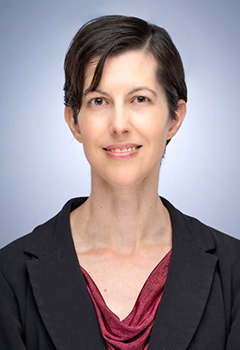An Interview with Cynthia Miller, Cync Software
Great Lakes Banker Publisher Greg O’Neil sat down with Cynthia Miller of Cync Software on the subject of how the latest technology is shaping community banking.

Cynthia Miller
Q: Cynthia, you started your career as a community banker. How did that journey evolve into building lending technology products?
A: I began as a credit analyst at a local community bank right after college. Because it was a small institution, I got the chance to wear multiple hats—from preparing board packets and working on lending compliance to evaluating software. That breadth of experience helped me understand the end-to-end lending process. Later, I helped set up a new commercial division at a credit union, implemented LOS and LaserPro, and even created all the lending procedures and policies. Eventually, I led the entire loan administration areas, covering everything from origination and documentation to servicing and compliance. During the pandemic, I also built and ran our PPP loan process, which involved everything from designing workflows to handling SBA reporting. These cumulative experiences, both operational and strategic, made transitioning into a fintech role a natural next step—especially as I wanted something transferable when my family relocated to North Carolina. Cync became the perfect fit.
Q:. What exactly are you working on at Cync? Can you walk us through the product you’re building and your role in shaping it?
A: I’m primarily focused on building Cync’s Commercial Loan Origination System and its subset, Cync Spreading. The LOS covers the full commercial lending lifecycle—from lead generation and approval through to booking, servicing, and portfolio management. The spreading product zooms in on financial analysis and ongoing covenant tracking. My role involves ensuring these products align with real-world banking needs, promoting consistency in processes, minimizing risk through automation, and ensuring intuitive workflows for users. Essentially, we’re trying to offer a unified platform that brings clarity, compliance, and efficiency to every stage of lending.
Q: Moving from a banking environment into a tech-forward company must have been quite a shift. What was that transition like for you?
A: It was definitely a learning curve—especially understanding the language and flow of product development. Terms like epics, grooming sessions, and sprints were new to me. But while I had to learn how development cycles work, the engineering team leaned on me for industry insight. It became a very collaborative process where my experience helped shape solutions, and I learned how to think like a product person.
Q: Based on your dual perspective—both as a former banker and now a product leader—what key gaps do you see in most Loan Origination Systems available today?
A: Two major gaps stand out. First, automated financial spreading is still missing in many systems. Analysts are manually entering data into spreadsheets or uploading it into rigid systems—there’s a huge opportunity for automation here. Second, most platforms lack intuitive, flexible workflows. If users don’t find the software easy to use, adoption suffers, delaying implementation and undermining efficiency. A system should work for people—not the other way around.
 Q: What practical advice would you give to commercial lenders looking to bridge these gaps in their current processes?
Q: What practical advice would you give to commercial lenders looking to bridge these gaps in their current processes?
A: Start by mapping out your current processes. What steps are manual? Who does what? What do you want the ideal process to look like? Having clarity on these elements will help you evaluate vendors more effectively. Also, consider team readiness—will there be resistance, and how can training or change management ease that? Getting early stakeholder buy-in is key to a successful transition.
Q: Loan spreading is often mentioned as a useful integration, but in your view, why is it becoming increasingly essential to an LOS platform?
A: Manual spreading—especially in Excel—is inconsistent, time-consuming, and prone to error. Integrating spreading into the LOS ensures standardized financial analysis across clients and periods while adding automation and consistency. In today’s environment, where lenders are pushed to increase efficiency and reduce risk, having automated, embedded spreading is no longer optional—it’s essential.
A: AI—particularly generative AI—is the big trend. It’s not about replacing human judgment but enhancing it. For example, AI can surface potential red flags or suggest areas for deeper analysis, helping lenders focus on relationship-building and decision-making. The future of LOS will involve more intelligent automation, better data-driven insights, and tools that empower lenders to make faster, more informed decisions.
